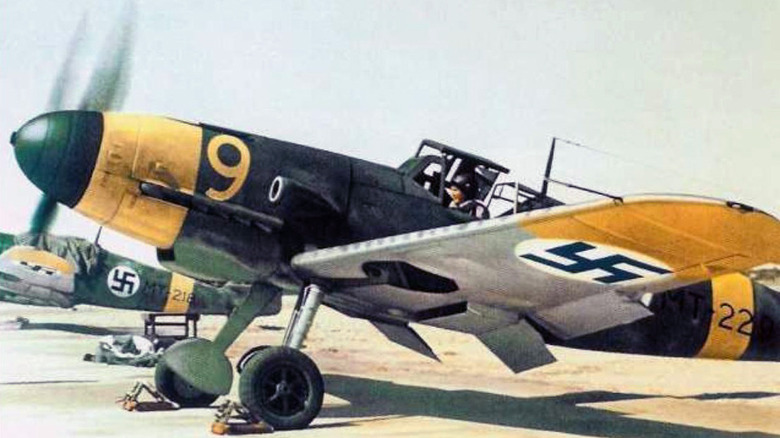Why Were German WW2 Planes Painted Yellow?
World War II aircraft were painted in a wide assortment of colors, from shades of gray to olive drab, blue, and camouflage patterns. British planes were painted Dark Earth, Dark Green, and Night — a very dark black-blue color. For U.S. Army planes, olive drab was applied to the top half, while the bottom received flat gray paint so it would melt into the sky if looked at from the ground. The olive drab was meant to blend into the ground when pilots looked down from above. (Olive Drab may look green, but it's actually a combination of black and yellow, while Neutral Gray mixed black and white.)
The colors for German Luftwaffe planes were established established by the Ministry of Aviation, or Reichsluftfahrtministerium, in 1933. The paints were initially produced by several German companies, and later in German-occupied territory. Aircraft manufacturers could choose their paint producer, but all had to stick to the standards laid out by the official color chart, known as the Farbtontafel.
During the war, the U.S. manufactured over 295,000 airplanes. By comparison, Germany built just over 100,000, Great Britain 108,000, and Japan a mere 67,000. The furious speeds at which so many of these legendary WW2 planes were screaming through the air — all painted in essentially the same colors — made it difficult to tell which planes belonged to which country. With friendly fire a significant concern, Germany painted its planes' cowlings, wingtips, and tails yellow to make them more easily identifiable.
Yellow was a way avoid friendly fire
When British pilots first encountered Luftwaffe planes like the Messerschmitt Bf 109 (one of the iconic Axis aircraft that dominated World War II) bearing these yellow markings, they initially thought the color might identify them as German aces who had shot down a high number of enemy planes. But the hope really was to easily and quickly distinguish Luftwaffe planes from Allied planes so ground forces and other pilots would avoid shooting their own planes out of the sky. Aircraft historians may know planes on sight while sitting on the ground, but when those planes are dogfighting at 350-plus mph thousands of feet in the air, mistakes can be made.
Yellow was used differently based on a unit's preference and would be painted on the top, bottom, or sometimes all of the engine cowl covers, the undersides of the wing tips and some or all of the rudder. White and even red paints were also used in rare cases.
Yellow color blocks were also used to signify different units and squadrons. And the Messerschmitt wasn't the only plane to get the yellow designation, as the Focke-Wulf Fw 190, the infamous dive-bombing Junkers "Stuka" Ju 87, and bombers like the Heinkel He 111 and Junkers Ju 88 all received the highly visible markings. But as the war raged on and Germany began to lose its much-vaunted superiority in the air, the differentiating yellow paint scheme diminished until it was no longer used at all.

